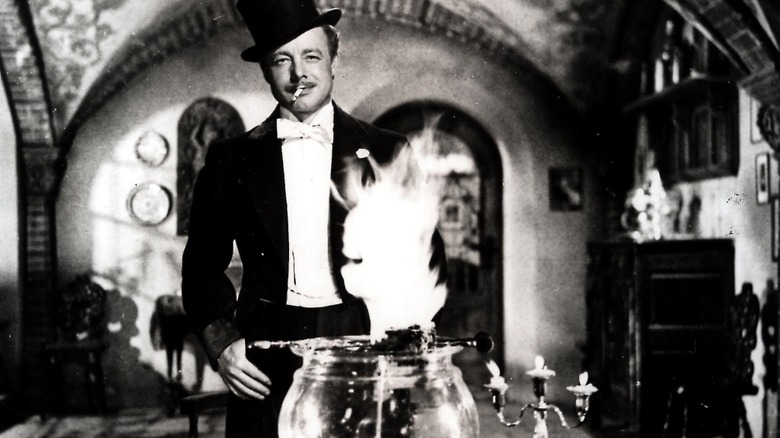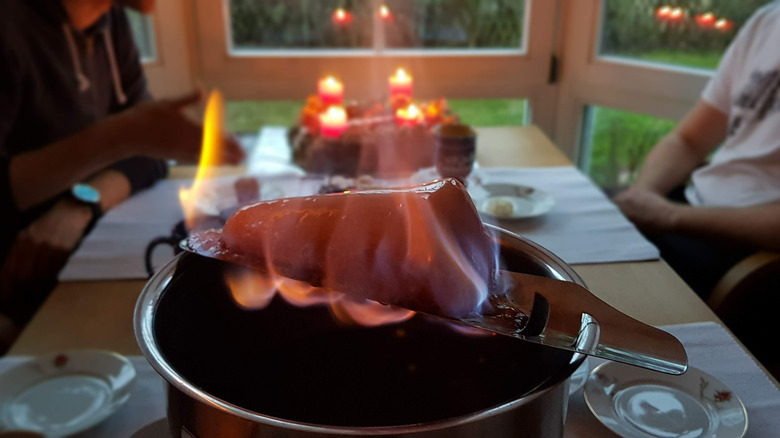The Charming Origins Of The Flaming Cocktail
"I don't know the scientific explanation, but fire made it good." Homer Simpson's iconic description of his self-invented cocktail (soon to be known as the Flaming Moe) perfectly summarizes many mixologists' obsessions with flaming drinks: they're cool and, perhaps because of that coolness, just seem to always taste good. The world's flaming drink obsession did not start with Homer Simpson in the 1990s though. Nor did it begin with the advent of the Tiki bar after World War II. No, according to Atlas Obscura, the honor of the oldest documented flaming cocktail goes to the feuerzangenbowle (pronounced foyer-zangen-bowl-uh): a German punch reportedly invented by university students in the mid-1700s.
Atlas Obscura notes that while exact recipes are not documented, a song referencing students enjoying the drink dates back to 1745. Lyrics reference students singing around a punchbowl while sugar melts into it and the beverage's sweet, syrupy consistency.
The key to this flaming concoction, like many modern fiery drinks including The Spruce Eats' version of the aforementioned Flaming Moe, is high-proof rum. The rum is poured over a large cube of sugar suspended over a bowl of punch and ignited, allowing the sugar to caramelize and slowly drip into the drink. This is somewhat different from other flaming cocktails, like the American Blue Blazer and the Café Brûlot, which Wine Enthusiast reports were both invented in the 1800s and relied on high proof alcohols — whiskey and brandy respectively — being mixed into the drinks themselves and lit.
An evolving tradition
Over the years the notorious party punch has evolved, going from a school staple to a holiday tradition. Atlas Obscura notes that following a boost in popularity from a 1944 comedy film titled "Die Feuerzangenbowle," the drink became a regular feature of holiday parties and German Christmas markets, many of which still reportedly host screenings of the film, despite its uncomfortable historical context.
While it is unknown what exactly was in the original college campus punch, today the base of feuerzangenbowle is mulled or spiced wine. German Foods lists a modern recipe for the punch as including dry red wine, oranges, lemon, cinnamon, cloves, and ginger. Instead of metal tongs (which the drink took its literal name "fire tongs punch" from) modern recipes call for suspending the sugar over a punch bowl using specialized equipment somewhat akin to a fondue set.
If you want to give this classic German punch a try at your next winter get-together there are simpler ways than buying specialty equipment but be warned, making any flaming cocktail can be dangerous and Cocktail Safe advises you take extra safety precautions before you start literally playing with fire.

